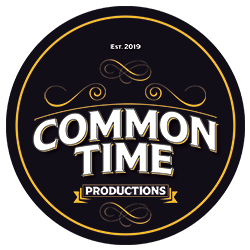Understanding the architecture of a song is pivotal for any aspiring songwriter. The song structure serves as the blueprint, dictating how different parts come together to create a cohesive and compelling piece. Mastering the basics of song structure can elevate your songwriting prowess and help you craft songs that resonate deeply with listeners. This article will guide you through the essential elements of song structure and provide practical tips for creating engaging and memorable music.
The Anatomy of a Song
- Verses: Verses are the storytelling sections of a song, providing the narrative and context. They set the scene and progress the story with each iteration, keeping listeners engaged and invested. Verses usually contain detailed lyrical content that helps to build the song’s theme and character.
- Choruses: The chorus is the emotional and musical climax of the song, often containing the central theme or message. It’s designed to be memorable, with a strong melody and repetitive lyrics that make it easy to sing along. The chorus serves as the anchor of the song, often being the most recognizable part.
- Bridges: Bridges offer a departure from the repetitive patterns of verses and choruses. They introduce a contrasting section that provides a fresh perspective, often leading to an emotional shift in the song. A well-crafted bridge can add depth and variety to a song’s structure.
- Pre-Choruses: A pre-chorus acts as a buildup to the chorus, creating anticipation and heightening the impact when the chorus finally hits. It can add an extra layer of depth to the song’s structure, bridging the gap between the verse and the chorus seamlessly.
- Hooks: Hooks are catchy musical or lyrical phrases that grab the listener’s attention. They can be found in any part of the song and are crucial for making a song stick in the listener’s mind. A good hook is often simple yet powerful, leaving a lasting impression.
Common Song Structures

- Verse-Chorus Form: The verse-chorus form is the most prevalent song structure in popular music. It alternates between verses and choruses, creating a familiar and engaging pattern. This structure is easy for listeners to follow and often ensures commercial appeal.
- AABA Form: In the AABA form, two verses (A) are followed by a contrasting bridge (B) before returning to the initial verse. This structure is common in many classic songs and provides a straightforward yet effective way to structure a song.
- ABABCB Form: Also known as the pop song structure, this form includes verses, choruses, and a bridge, providing a balanced and dynamic arrangement. This structure is versatile and can accommodate various musical styles and genres.
Verse
- Purpose of the Verse: Verses lay the groundwork for the song, introducing characters, setting, and plot. They provide a detailed narrative that supports the overarching theme. Each verse should build on the previous one, adding new information and maintaining interest.
- Crafting Engaging Verses: To create compelling verses, focus on vivid imagery and storytelling. Use descriptive language and specific details to draw listeners into the song’s world. Consider the emotional arc of your song and how each verse contributes to it.
- Lyrical Content in Verses: Verses should progress the story or theme, each one adding new information or perspective. This keeps the listener engaged and eager to hear what comes next. Aim for clarity and coherence in your lyrics, ensuring they support the song’s message.
Chorus

- Defining the Chorus: The chorus is the song’s focal point, delivering the main message or emotional punch. It’s designed to be instantly recognizable and repeatable. A strong chorus can make or break a song, so it should be crafted with care.
- Making the Chorus Memorable: A memorable chorus combines a strong melody with impactful lyrics. Repetition and simplicity are key to making it easy for listeners to remember and sing along. Consider using powerful and emotive language to enhance its appeal.
- Repetition and Its Power: Repetition reinforces the song’s central theme and makes the chorus more memorable. It creates a sense of familiarity and comfort for the listener. Use repetition wisely to ensure it enhances rather than detracts from your song.
Bridge
- Role of the Bridge: The bridge serves as a contrast to the verses and choruses, providing a break from the repetitive structure. It introduces new ideas or emotions, keeping the song dynamic. A well-placed bridge can reinvigorate the listener’s interest.
- Creating Contrast: Effective bridges contrast with the rest of the song in terms of melody, harmony, or rhythm. This shift can reinvigorate the listener’s interest and add depth to the song. Experiment with different musical ideas to create an impactful bridge.
- Emotional Shifts in Bridges: Bridges often introduce an emotional shift, adding tension or resolution. They can heighten the song’s impact by taking the listener on an unexpected journey. Consider the overall emotional arc of your song when crafting your bridge.
Pre-Chorus

- Setting Up the Chorus: The pre-chorus builds anticipation for the chorus, creating a sense of buildup and excitement. It prepares the listener for the upcoming climax. Use dynamic and harmonic changes to enhance the pre-chorus’s impact.
- Building Tension: A good pre-chorus increases tension through melodic and harmonic progression. This makes the arrival of the chorus more satisfying. Experiment with different musical elements to create a compelling buildup.
- Pre-Chorus Examples: Examining popular songs with effective pre-choruses can provide insight into how to craft your own. Look for patterns in melody and lyric structure that create anticipation. Use these examples as inspiration for your songwriting.
Hooks
- What Makes a Great Hook? A great hook is catchy, memorable, and emotionally resonant. It can be a lyrical phrase, a melodic riff, or a rhythmic pattern. The best hooks are simple yet impactful, leaving a lasting impression on the listener.
- Types of Hooks: Hooks can vary widely, from vocal lines to instrumental riffs. Identifying the right type of hook for your song can enhance its appeal. Experiment with different hook ideas to find what works best for your music.
- Integrating Hooks Seamlessly: Seamlessly integrating hooks into your song ensures they enhance rather than distract. They should feel like a natural part of the song’s structure. Consider the placement and repetition of hooks to maximize their impact.
Rhythm and Meter

- Understanding Song Rhythm: Rhythm is the backbone of a song, providing the underlying pulse. Understanding how to manipulate rhythm can add complexity and interest to your songwriting. Experiment with different rhythmic patterns to enhance your music.
- Common Time Signatures: Common time signatures like 4/4 and 3/4 provide a familiar framework for songs. Experimenting with different time signatures can add uniqueness. Consider the genre and style of your song when choosing a time signature.
- Experimenting with Rhythm: Experimenting with rhythm can lead to innovative song structures. Try incorporating syncopation, polyrhythms, or unusual time signatures. These elements can add complexity and interest to your music.
Harmony and Chord Progressions
- Basics of Harmony: Harmony adds depth and richness to a song. Understanding the basics of harmony can help you create more complex and interesting songs. Experiment with different harmonic ideas to enhance your music.
- Adding Unique Harmonic Elements: Incorporating unique harmonic elements can set your song apart. Experiment with unusual chord progressions or modulations to add interest. Consider the overall mood and theme of your song when crafting harmonic ideas.
Song Length and Structure

- Ideal Song Lengths: The ideal song length varies depending on genre and audience. Balancing length and engagement is key to maintaining listener interest. Consider the overall structure and flow of your song when determining its length.
- Balancing Length and Engagement: Ensuring your song is neither too long nor too short keeps listeners engaged. Pay attention to how different sections contribute to the overall flow. Experiment with different lengths to find what works best for your music.
- Structure and Commercial Viability: Understanding how song structure affects commercial viability can help you craft more marketable songs. Familiar structures are often more accessible to listeners. Consider the potential audience and market for your song when crafting its structure.
Conclusion
Understanding song structure is crucial for effective songwriting as it allows you to create engaging and memorable songs. Aspiring songwriters should embrace creativity, experiment with different structures, and continue refining their craft. Consider the overall theme and style of your song while exploring various structural ideas. With practice and dedication, you can craft songs that resonate deeply with listeners.
If you would like to learn about the importance of chords in songwriting, check out this link that will take you to an article all about chords in songwriting!
Chords In Songwriting and Their Importance – CommonTime Productions
About The Author

Mary Nance
Mary is a multi-talented small business entrepreneur and creative artist, specializing in teaching, content creation, and custom songwriting. With a passion for empowering aspiring content creators, she offers lessons in Unreal Engine, music, and other content creation tools through her social media communities of CommonTime Productions.



Leave A Comment